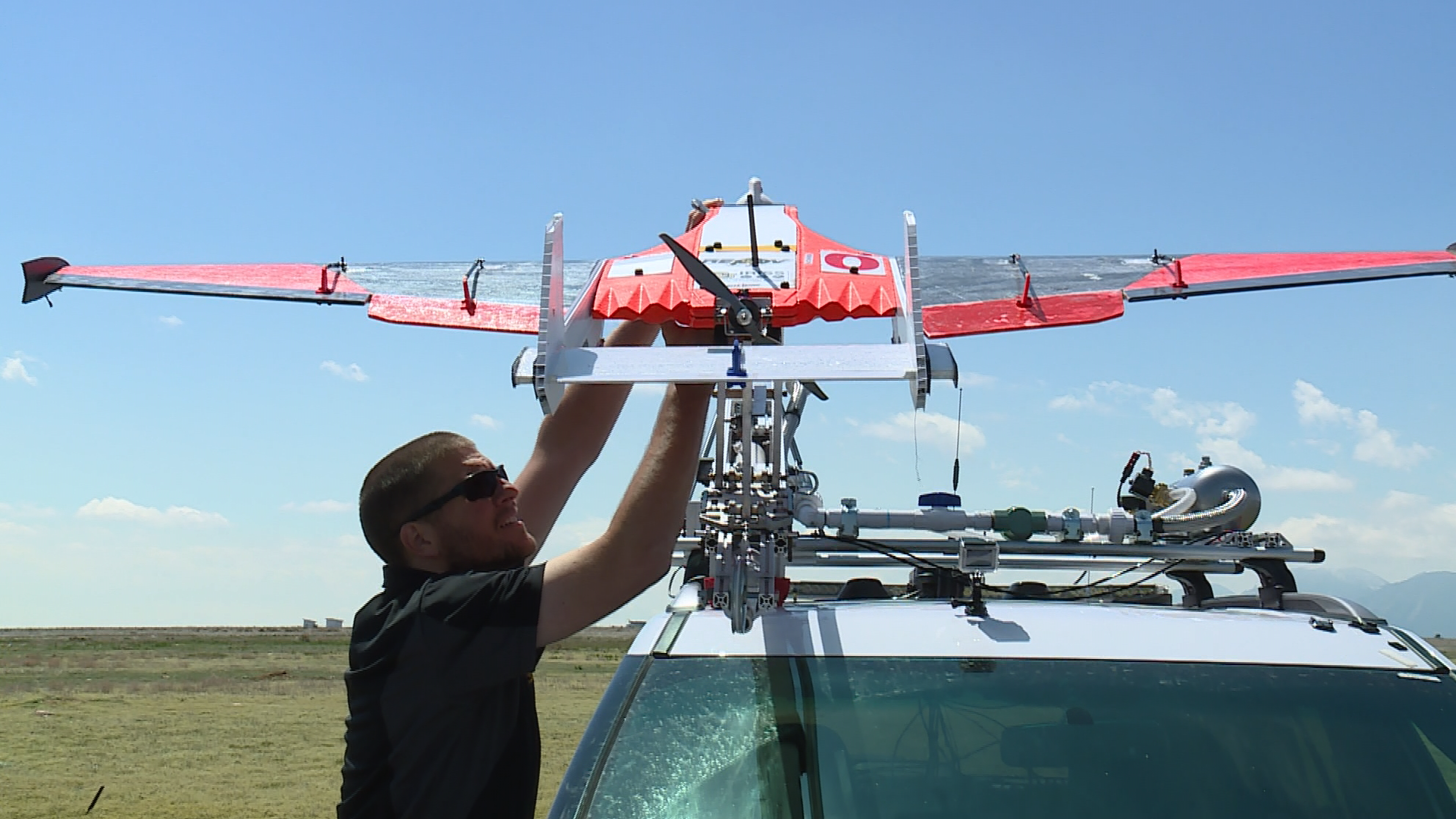BOULDER, Colo. — Researchers from the University of Colorado in Boulder have less than two weeks to prepare a fleet of four drones for a trip into Tornado Alley. They spent Thursday on a mesa in Boulder County, getting in a series of test flights.
The project dubbed TORUS (Targeted Observation by Radars and UAS of Supercells), is scheduled to start on May 14. Scientists from four universities will team up with the National Severe Storms Laboratory starting in Salina, Kansas.
They'll have about 30 days to hunt the biggest supercells from the Rocky Mountains to the Mississippi River, and from the Gulf of Mexico to Canada.
Getting sensors directly into the storm to measure temperature, winds, pressure, and humidity will be the responsibility of CU's drone team. To operate in the harsh weather conditions surrounding a supercell thunderstorm, they need a drone built for durability.
“A fixed-wing aircraft is able to handle the gusty conditions a lot better than a multi-rotor,” said Eric Frew the professor in charge of the CU drone team. “We actually don’t know the limits of this drone’s behavior. We haven’t reached them yet.”
Frew said another advantage of the fixed-wing drone is that it can stay in the air for three hours on one set of batteries.
They will get guidance from the meteorologists working on the project to get into position to penetrate storms. They will need to keep the drones away from the heavy rain and hail. Lightning is also a concern.
"So ideally when we launch the drone we want to be about five to 10 miles away from the storm," said Frew. "From there we can drive into the storm as the drone follows us from above."
Meteorologists have learned a lot about tornadoes in recent years, but one of the biggest mysteries is why some supercells produce tornadoes while similar supercells do not. The National Weather Service said that only 27 percent of tornado warned storms have actually produced a tornado over the last 10 years.
“The best scenario for us is that half the time we’re out there, the storms we’re studying produce tornadoes, half the time they don’t so we can compare what’s different," said Frew.
Frew said the ultimate goal of tornado research is to increase lead time for warnings, which on average is just 14 and a half minutes. He believes that science can double or maybe even triple that.
“Imagine how much safer society can get with that extra 45 minutes of time,” said Frew.
SUGGESTED VIDEOS | Science is cool

